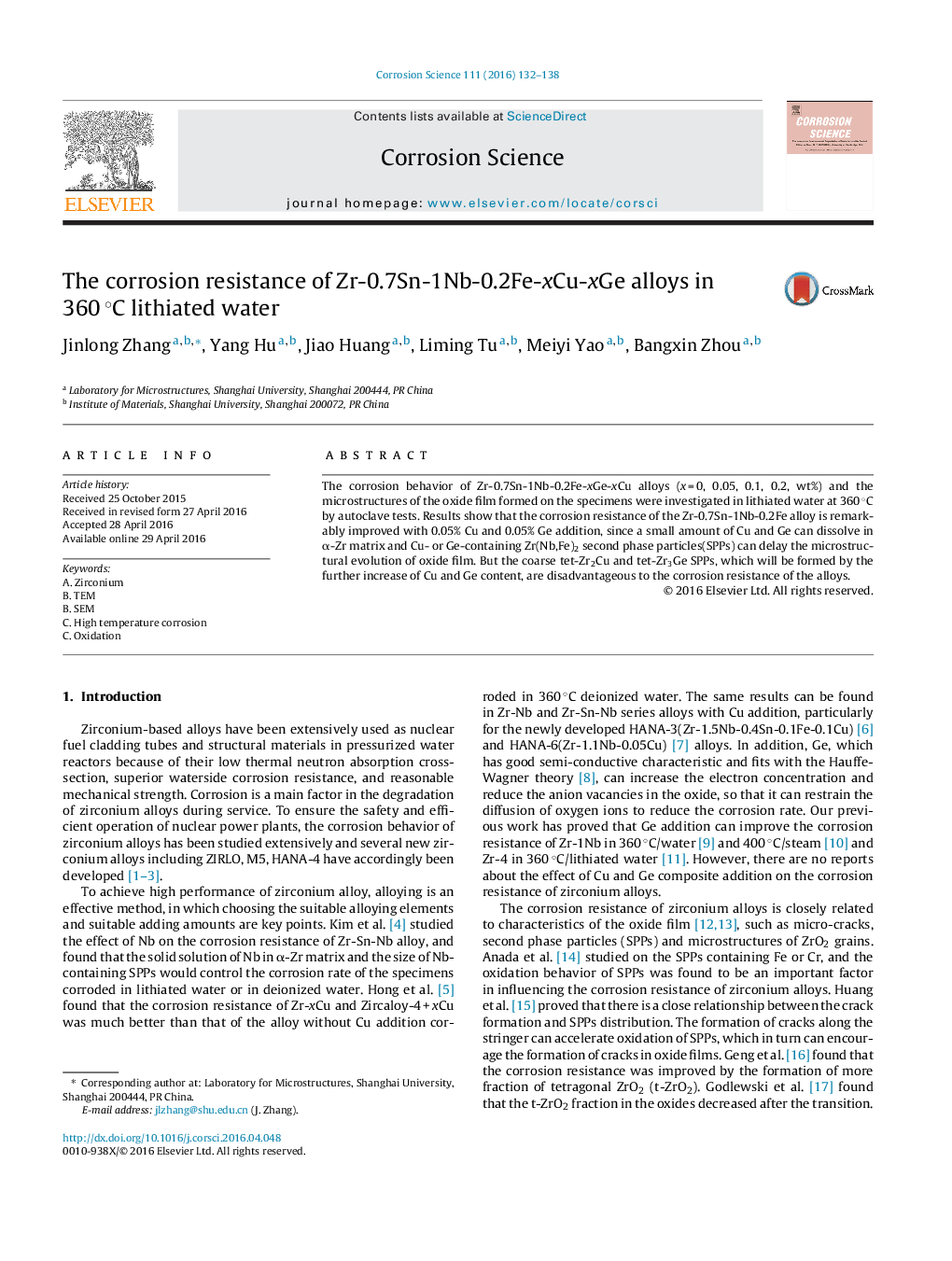| کد مقاله | کد نشریه | سال انتشار | مقاله انگلیسی | نسخه تمام متن |
|---|---|---|---|---|
| 1468285 | 1509984 | 2016 | 7 صفحه PDF | دانلود رایگان |

• A small amount of Ge and Cu addition can improve the corrosion resistance.
• Corrosion resistance is optimal when Cu and Ge content is 0.05%.
• Columnar grains to equiaxed grains evolution was retarded by Cu and Ge addition.
• Coarse Zr2Cu and Zr3Ge will precipitate by adding more Cu and Ge.
• Cracks can be easily formed around the coarse SPPs in oxide layers.
The corrosion behavior of Zr-0.7Sn-1Nb-0.2Fe-xGe-xCu alloys (x = 0, 0.05, 0.1, 0.2, wt%) and the microstructures of the oxide film formed on the specimens were investigated in lithiated water at 360 °C by autoclave tests. Results show that the corrosion resistance of the Zr-0.7Sn-1Nb-0.2Fe alloy is remarkably improved with 0.05% Cu and 0.05% Ge addition, since a small amount of Cu and Ge can dissolve in α-Zr matrix and Cu- or Ge-containing Zr(Nb,Fe)2 second phase particles(SPPs) can delay the microstructural evolution of oxide film. But the coarse tet-Zr2Cu and tet-Zr3Ge SPPs, which will be formed by the further increase of Cu and Ge content, are disadvantageous to the corrosion resistance of the alloys.
Journal: Corrosion Science - Volume 111, October 2016, Pages 132–138